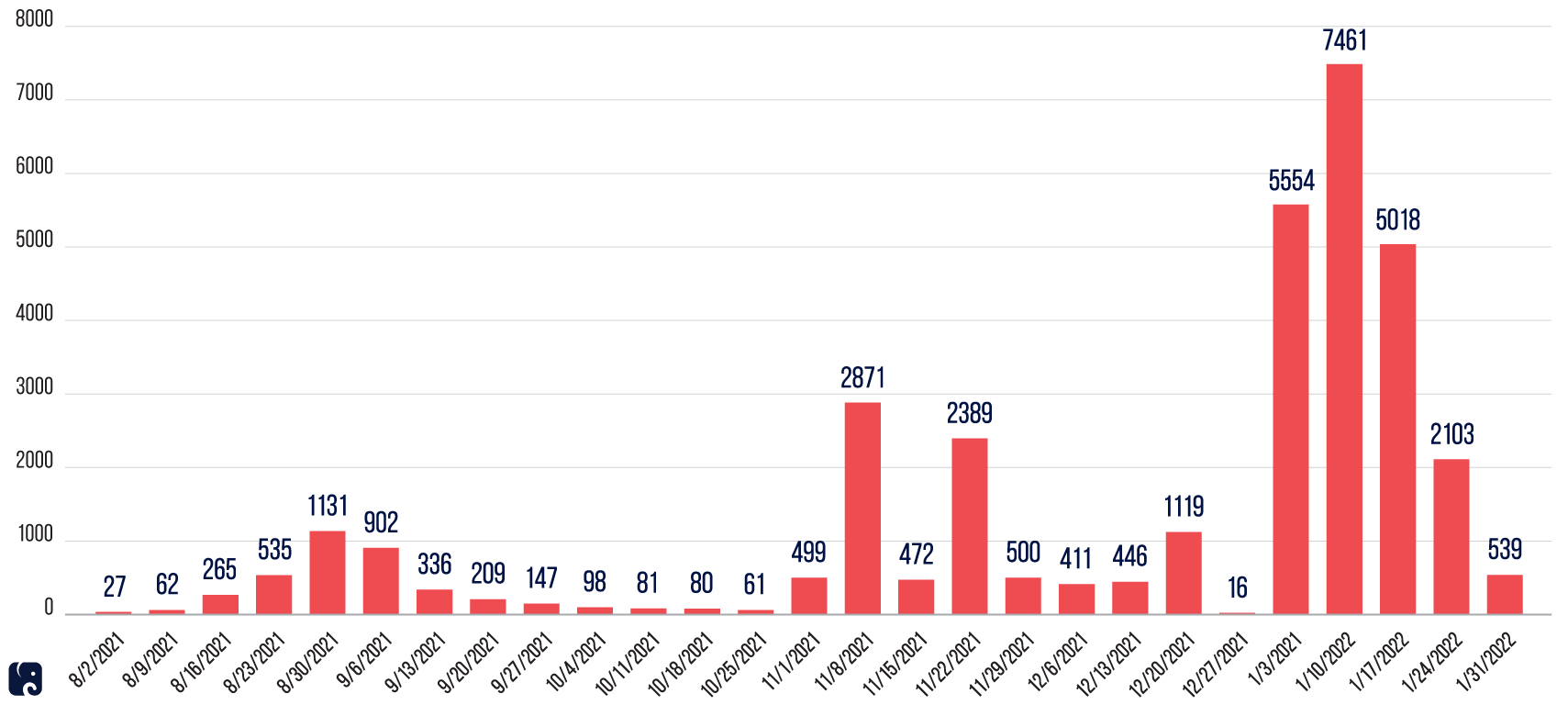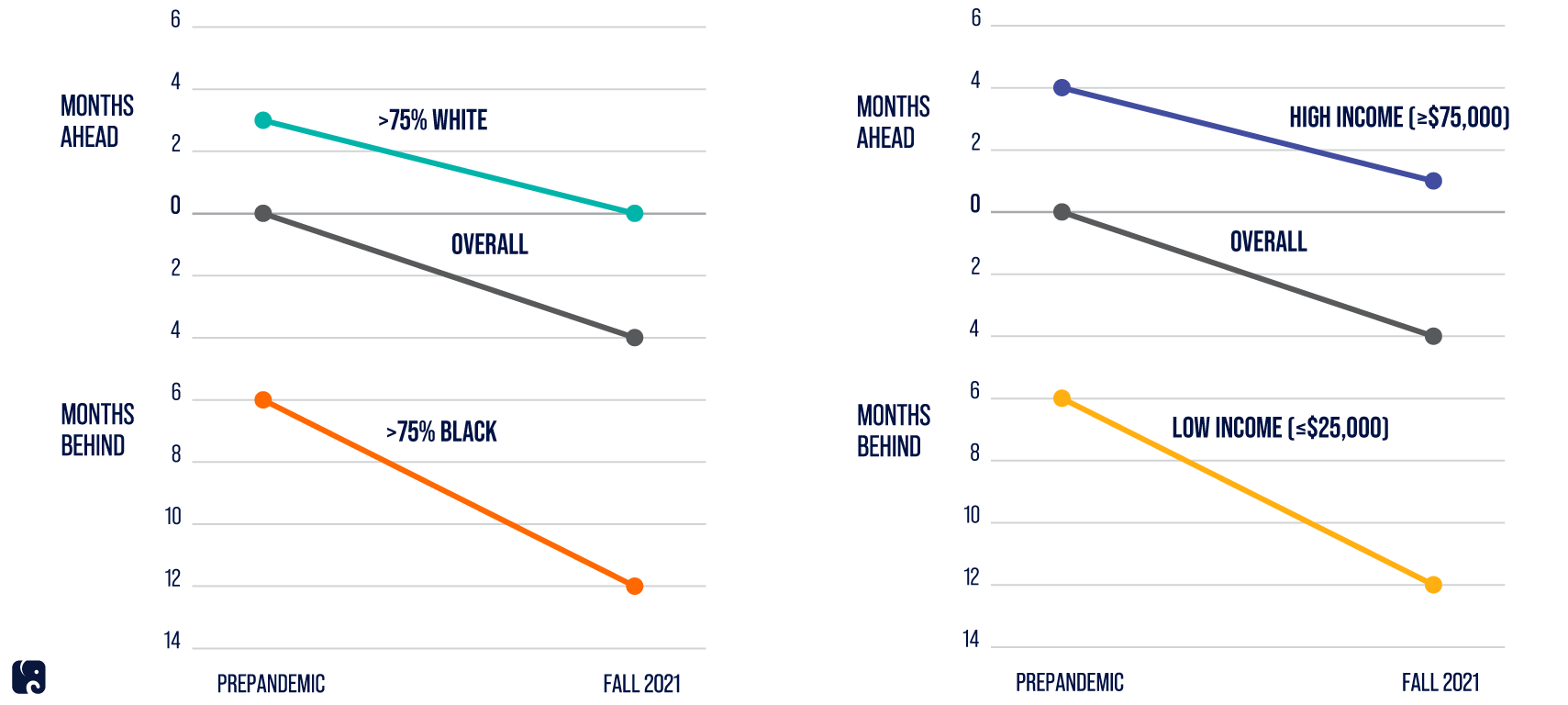Learning Losses Persist for America's Students
KEY TAKEAWAYS
- In January, thousands of schools abruptly closed for in-person learning due to COVID-19, despite President Biden promising that testing and other measures meant schools could stay open safely.
- One study found that school closures over the past two years have left students well behind where they would have been otherwise. Students who already trailed their peers before the pandemic have fallen even further behind.
- Congress has provided more than $190 billion for K-12 schools to stay open for safe in-person learning and an additional $10 billion specifically for testing, but districts have yet to spend most of the education money.
Earlier in the pandemic, schools shut their doors and tried to teach kids online or in “hybrid” setups. With that failed educational experiment behind us, and vaccines widely available to students and school staff, President Biden declared in December, “Today, we don’t have to shut down schools because of a case of COVID-19.” Two weeks after his remarks, thousands of schools started announcing closures due to COVID-19, disrupting students’ in-person learning again.
Thousands of Schools Closed in January

More than 7,400 schools closed their buildings for one or more days the second week of January. While the number of schools with disruptions has declined since then, the closures last month were significantly higher than at any other point this school year. Atlanta Public Schools started this semester virtually, before reopening with test-to-stay procedures for students. Citing a high COVID-19 infection rate in the city, Detroit cancelled classes for the first three days of the semester to allow for testing, then offered only online learning for the rest of January. After two days of school in January, parents in Chicago were sent scrambling to find child care after the teachers union voted to stop in-person learning and not report to their classrooms while it negotiated with the mayor over COVID testing and other reopening policies. Shortages of teachers, bus drivers, and other staff led scores of school districts in New Jersey to switch to remote learning in early January. Several schools in one New Jersey school district are shortening classes and dismissing students early for the month of February so they can manage staffing.
lost learning
The recent closures only added to the disruption in America’s classrooms over the past two years. The extended school closures of 2020 and 2021 robbed students of in-person interaction with their classmates, damaged their mental health, and took a toll on their learning. McKinsey & Company estimates that first through sixth graders started this school year behind where they would have been otherwise – by an average of three months in reading and four months in math.
Learning Loss Got Worse During the Pandemic

The learning loss is even more striking for minority and low-income students. In schools where more than 75% of the students are Black, the average student started the year about 12 months behind in math, compared to four months for students overall. In schools with average incomes below $25,000, students were 12 months behind, while their peers in schools with an average income of $75,000 or more were actually about one month ahead. Absenteeism also has increased during the pandemic. McKinsey concluded: “If historical correlations between chronic absenteeism and high school graduation hold, this could translate into an additional 1.7 million to 3.3 million eighth-12th graders dropping out of school because of the pandemic.”
students need open schools
Lack of money is not standing in the way of schools staying open safely. Congress has provided more than $190 billion to help K-12 schools stay open for safe, in-person learning. School districts have yet to spend most of the money they’ve been given – by the end of 2021, 86% had still not been spent. The Department of Health and Human Services added another $10 billion from its funding to help schools do COVID-19 testing. Even President Biden admitted recently: “All that money is there. There’s billions of dollars made available.”
Republican senators recently wrote to Education Secretary Miguel Cardona about the department’s guidance and strategy to help schools stay open for full, in-person learning. The letter asked what the department has done to ensure schools have COVID-19 tests and how it informed state and local leaders about CDC’s updated guidance on isolation and quarantine.
It is crucial for students’ education and well-being that schools stay open for in-person learning. We know it can be done safely, parents are desperate for it to happen, and Congress has provided massive amounts of money to help. Now it is up to schools and the Biden administration to do what’s needed to let kids consistently get back to school.
Next Article Previous Article
